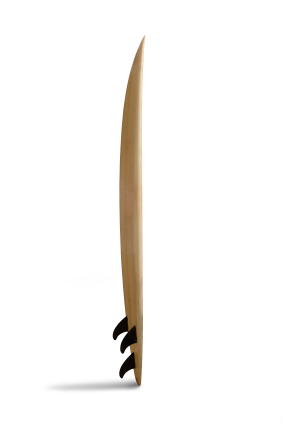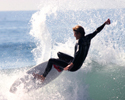Foil
What Foil Means to You
 When choosing a surfboard design, foil (also known as thickness flow or thickness distribution) is deserving of close attention. This refers to the distribution of foam from the nose to the tail. Foil is the board’s thickness while looking at the board from a side view. There are three different areas of the board where foam is distributed smoothly. You will need to consider three parts: the nose, the middle, and the tail.
When choosing a surfboard design, foil (also known as thickness flow or thickness distribution) is deserving of close attention. This refers to the distribution of foam from the nose to the tail. Foil is the board’s thickness while looking at the board from a side view. There are three different areas of the board where foam is distributed smoothly. You will need to consider three parts: the nose, the middle, and the tail.
The thickness of the surfboard will support paddling, catching waves, and riding through slow or flat spots. Too much thickness will hinder your performance. The board’s nose, middle, and tail each affect different aspects of surfboard performance. You need to find the right balance of thickness in each of the three parts to get the right combination for your surfing style and skill level.
Nose Thickness
A thinner nose can feel more responsive to faster turning inputs. The thinner the nose, the less weight up front the surfer has to swing when turning. However, if the nose thickness is too thin, then it sinks into the face of the wave when the surfer moves forward in trim. If the board sinks too much, it will pearl or bog. Rocking too much of the nose forward into the water can also cause the board to pivot around the wide point which will release the tail area from the face of the wave. This causes the board to slide or drift and the surfer looses control.
Middle Thickness
Surfboards are typically measured in three measurements; height, width and thickness. The thickness is measured by the thickest part of the board which is typically located around the mid section. Most surfboards are between 2 1/4" - 3 1/4" thick.
The heavier you are, the thicker your surfboard should be for extra float. If your board is too thin, you sink the board making it tough to paddle and catch waves. A thicker board is also stronger and more resistant to breaking. Too much thickness can make your board feel excessively buoyant. This can be a problem if it feels resistant to being leaned on its edges. Turning and maneuverability requires leaning into the rails. The harder it is to lean into the rails, the stiffer the board will feel, ultimately having less control.
Tail Thickness
Similar to having a larger surface area, a thicker tail will improve your board’s paddling. Because the board’s back end will rise out of the water, the surfboard will plane easier, helping to maintain speeds in slow or flat spots. Although a planing board is less likely to squat, which causes tail drag, in faster hollow surf a thinner tail will bite into the wave more. This will give the surfer better hold and control.
Tail thickness is not the only characteristic to consider when it comes to speed, control, and maneuverability. These issues can be balanced with different tail shapes and fins. Click here to read more on Tail Shapes and Fins.
Orbelian, George. "Essential Surfing." Orbelian Arts, 1987, pp. 25-26.














0 Comments